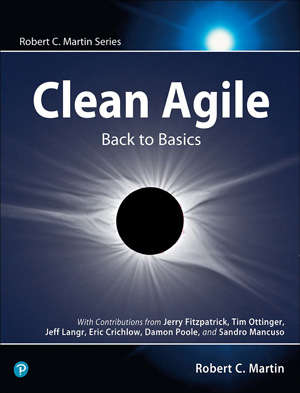
出版时间:2019.10
官网链接:Pearson
下载地址:百度网盘(PDF+EPUB+MOBI)
提取码 :ippg
内容简介:
Agile Values and Principles for a New Generation
Nearly twenty years after the Agile Manifesto was first presented, the legendary Robert C. Martin (“Uncle Bob”) reintroduces Agile values and principles for a new generation–programmers and nonprogrammers alike. Martin, author of Clean Code and other highly influential software development guides, was there at Agile’s founding. Now, in Clean Agile: Back to Basics, he strips away misunderstandings and distractions that over the years have made it harder to use Agile than was originally intended.
Martin describes what Agile is in no uncertain terms: a small discipline that helps small teams manage small projects . . . with huge implications because every big project is comprised of many small projects. Drawing on his fifty years’ experience with projects of every conceivable type, he shows how Agile can help you bring true professionalism to software development.
- Get back to the basics–what Agile is, was, and should always be
- Understand the origins, and proper practice, of SCRUM
- Master essential business-facing Agile practices, from small releases and acceptance tests to whole-team communication
- Explore Agile team members’ relationships with each other, and with their product
- Rediscover indispensable Agile technical practices: TDD, refactoring, simple design, and pair programming
- Understand the central roles values and craftsmanship play in your Agile team’s success
If you want Agile’s true benefits, there are no shortcuts: You need to do Agile right. Clean Agile: Back to Basics will show you how, whether you’re a developer, tester, manager, project manager, or customer.
Features
- The eagerly-anticipated new book from “Uncle Bob” – Robert C. Martin, author of The Clean Coder, Clean Code, and Clean Architecture
- How software developers can bring unprecedented professionalism and discipline to agile development
- Practical answers to the most crucial questions agile developers face now, 20 years after the agile movement began